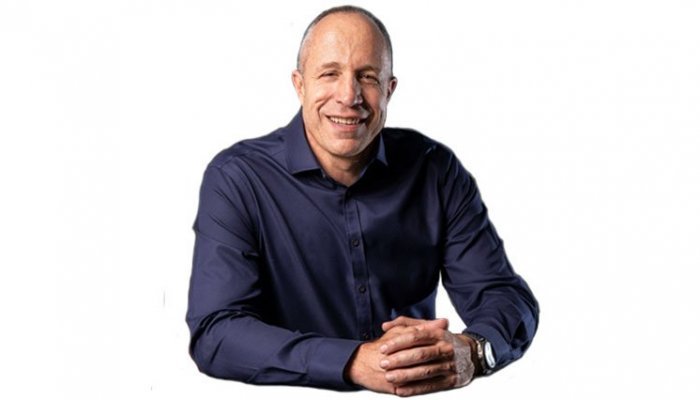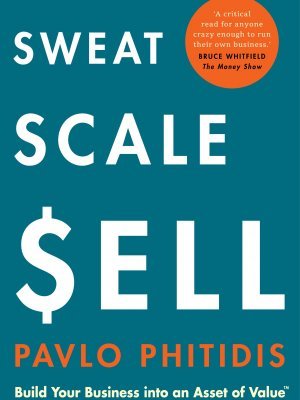To many South Africans, Pavlo Phitidis is simply the man on the radio who talks about business and entrepreneurship. To others, he is the CEO of business growth accelerator Aurik, and part of a team which has started, built and sold 12 businesses in nine years. Two of those listed on the JSE, two failed, and eight were sold. Along the way, Phitidis and co-founder, Carien Engelbrecht, developed a methodology that builds a business into something called an Asset of Value.
Phitidis has just distilled his knowledge and experience into a new book called Sweat, Scale, $ell. He spoke to Acumen from his Johannesburg office and we began by asking him what exactly he meant by Asset of Value.
An Asset of Value is a business that’s well-positioned to survive and thrive in a very competitive environment. Most of them are small and medium enterprises – businesses doing between US$800,000 (R11 million) and US$50 million (R715 million), and according to SARS, there are probably about 100,000 such businesses in South Africa. In order to survive, you need to position yourself very effectively against your competitors.
Positioning has two parts: I recognise that in my business, I’m competing with a huge number of other similar types of businesses and what sets me apart is not my product, nor my service. What sets me apart is who I serve, the extent to which I understand the problem they experience and how I serve them to help solve that problem. In doing so, can I provide them with a really good experience so they come back to me again and again and again? Positioning is identifying what makes you special as a business. The fancy term for it is strategy – what sets you apart?
Once you have understood this, the next thing an Asset of Value has is a system of delivery. This is made up of all the functions that drive a business – marketing, sales, operations and so on. All of these activities are generated and governed by systems – activities in a sequence which can be measured and taught. This means that the activities in the business, when well-orchestrated and well-coordinated, will consistently deliver the experience that solves the problem for the people you serve. When you have this system of delivery in place, for the first time, you are now building an Asset of Value.
...an Asset of Value is a business that at some point in the future can be sold at a premium price...
Now you are able to get the right team on board – the right people to do the right thing at the right time. Because if you understand your purpose, you understand your position, you understand the systems that deliver that on a consistent basis for you, and you can now employ people to operate those systems.
In an Asset of Value, you then get to the point where, as the business owner, your time from daily operations is released. Now you can focus on two things only: growing the business and staying ahead in a very competitive but also changing business environment.
You now have a business that’s fundable – a business that a funder will look at and understand how they can invest in your growth, how that investment will be managed and how they can extract value from the investment that they’ve made.
Finally, an Asset of Value is a business that at some point in the future can be sold at a premium price and fairly cleanly. As business owners, we rely on that as our pension or legacy or reward – call it what you will – but as business owners, we look to make our money on a capital exit.
Why is this so difficult for most SME owners to do?
Most people start a business out of necessity – very few out of pure opportunity – and they’re underfunded and under-capitalised. So, immediately, we start to chase cash flow, deals and customers and hope that we can run harder and faster, and chase even more cash flow, deals and customers. We then move quickly into a space where, as we get customers, we have to deliver the service or product to them – we have to fulfil the promise we’ve made to them. This creates a cycle where we get sucked into chasing business, then delivering it, chasing again, then delivering it again. In the book, I talk about a Sine Wave: many, many cycles of boom and bust. The moment you get into that space you lose perspective and learn to believe that this is what building a business is all about.
Another reason is that we’re never taught how to build a business. In many ways, our education system never gives us a method, an approach, how to ‘build a business by putting these bricks on top of these bricks’ education. We’re taught how to do things like marketing or accounting, but those are functions of a business, not the business itself.
...we’re never taught how to build a business...
A third factor is the South African environment. We have an extremely business-unfriendly policy environment, with no real recognition of what businesses deliver by way of taxes and jobs. You’re left very much on your own and that puts you in a position where it’s sometimes very hard to see the wood for the trees. Over time, your energy runs out, and along with it, time runs out as well as your desire, will and determination to fight for the next level of opportunity. Growth wanes over time and you look for an easier ride, simply doing what you’ve always done, so you land up with the same results today and tomorrow.
The headline of this article – Buffet Comes Knocking – is taken directly from your book. How did it come to you?
I was a business broker for two or three years and had upwards of 4,000 businesses on the books. The constant challenge was buyers who said the prices were too high and sellers who said prices were too low. We spend our lives building a business, but mostly you build around you, your lifestyle, what works for you and your comfort. We almost never build a business understanding the requirements of someone called a business growth funder or a business buyer. Unless you understand how value is created and how to create a system that delivers that value for you and supports that valuation through the design of the business, it becomes almost impossible to sell to someone like Buffett.
It should never be left to fate. The reason I say that is because if you get to a point 20 years down the line where the price put on the table for your business is not enough to look after you and your family for the rest of your life, you then have to start to rebuild. And very often, there is no time left – the runway is too short, and time has run out.







